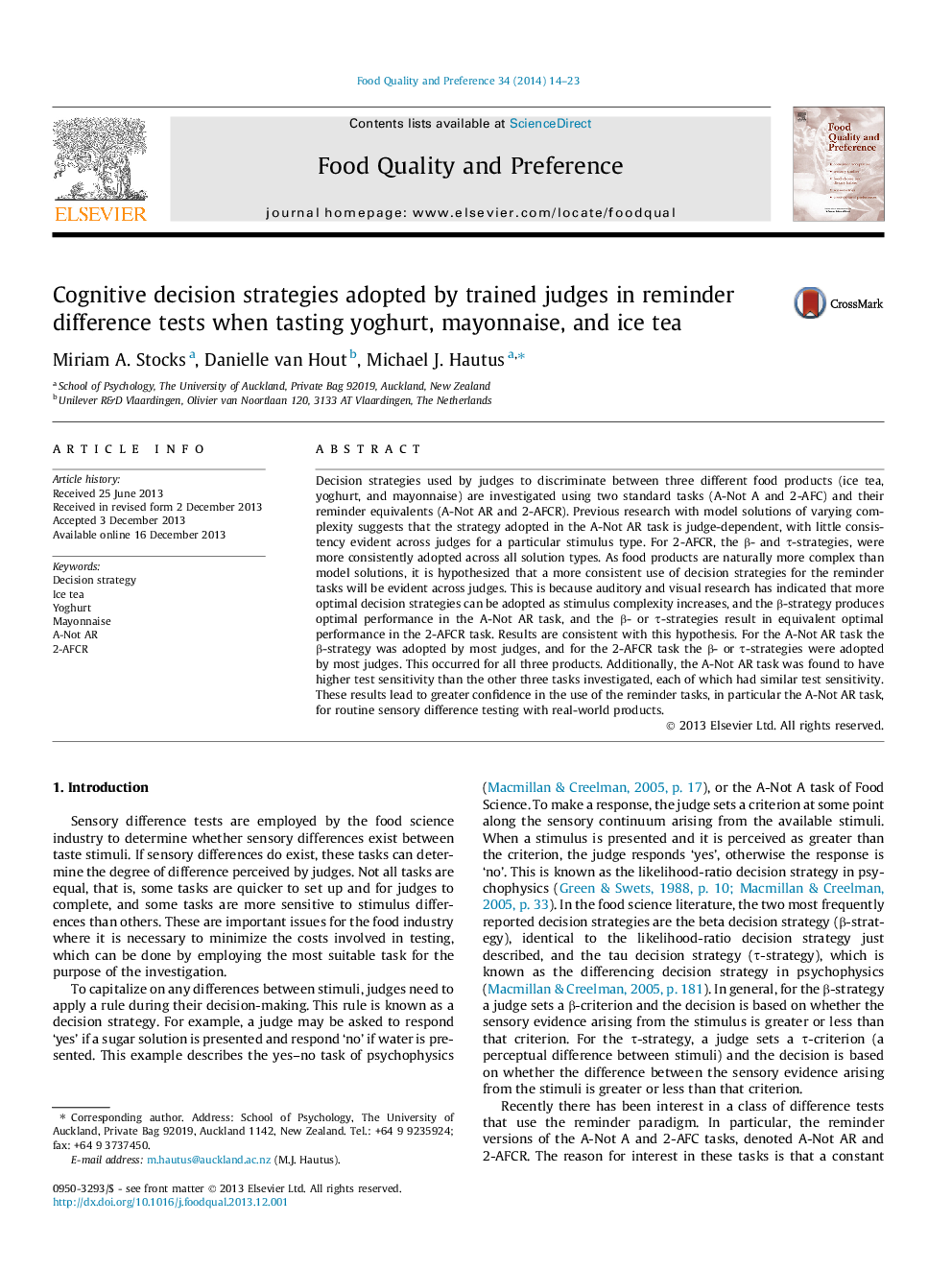| Article ID | Journal | Published Year | Pages | File Type |
|---|---|---|---|---|
| 4317185 | Food Quality and Preference | 2014 | 10 Pages |
•Four difference tests compared on discrimination of ice tea, yoghurt, and mayonnaise.•Decision strategies are assessed for two reminder difference tests (A-Not AR, 2-AFCR).•A-Not AR has higher test sensitivity than other tasks.•Optimal decision strategies used by judges in both reminder tasks.•For these products and trained judges the A-Not AR task proves to be superior.
Decision strategies used by judges to discriminate between three different food products (ice tea, yoghurt, and mayonnaise) are investigated using two standard tasks (A-Not A and 2-AFC) and their reminder equivalents (A-Not AR and 2-AFCR). Previous research with model solutions of varying complexity suggests that the strategy adopted in the A-Not AR task is judge-dependent, with little consistency evident across judges for a particular stimulus type. For 2-AFCR, the β- and τ-strategies, were more consistently adopted across all solution types. As food products are naturally more complex than model solutions, it is hypothesized that a more consistent use of decision strategies for the reminder tasks will be evident across judges. This is because auditory and visual research has indicated that more optimal decision strategies can be adopted as stimulus complexity increases, and the β-strategy produces optimal performance in the A-Not AR task, and the β- or τ-strategies result in equivalent optimal performance in the 2-AFCR task. Results are consistent with this hypothesis. For the A-Not AR task the β-strategy was adopted by most judges, and for the 2-AFCR task the β- or τ-strategies were adopted by most judges. This occurred for all three products. Additionally, the A-Not AR task was found to have higher test sensitivity than the other three tasks investigated, each of which had similar test sensitivity. These results lead to greater confidence in the use of the reminder tasks, in particular the A-Not AR task, for routine sensory difference testing with real-world products.
